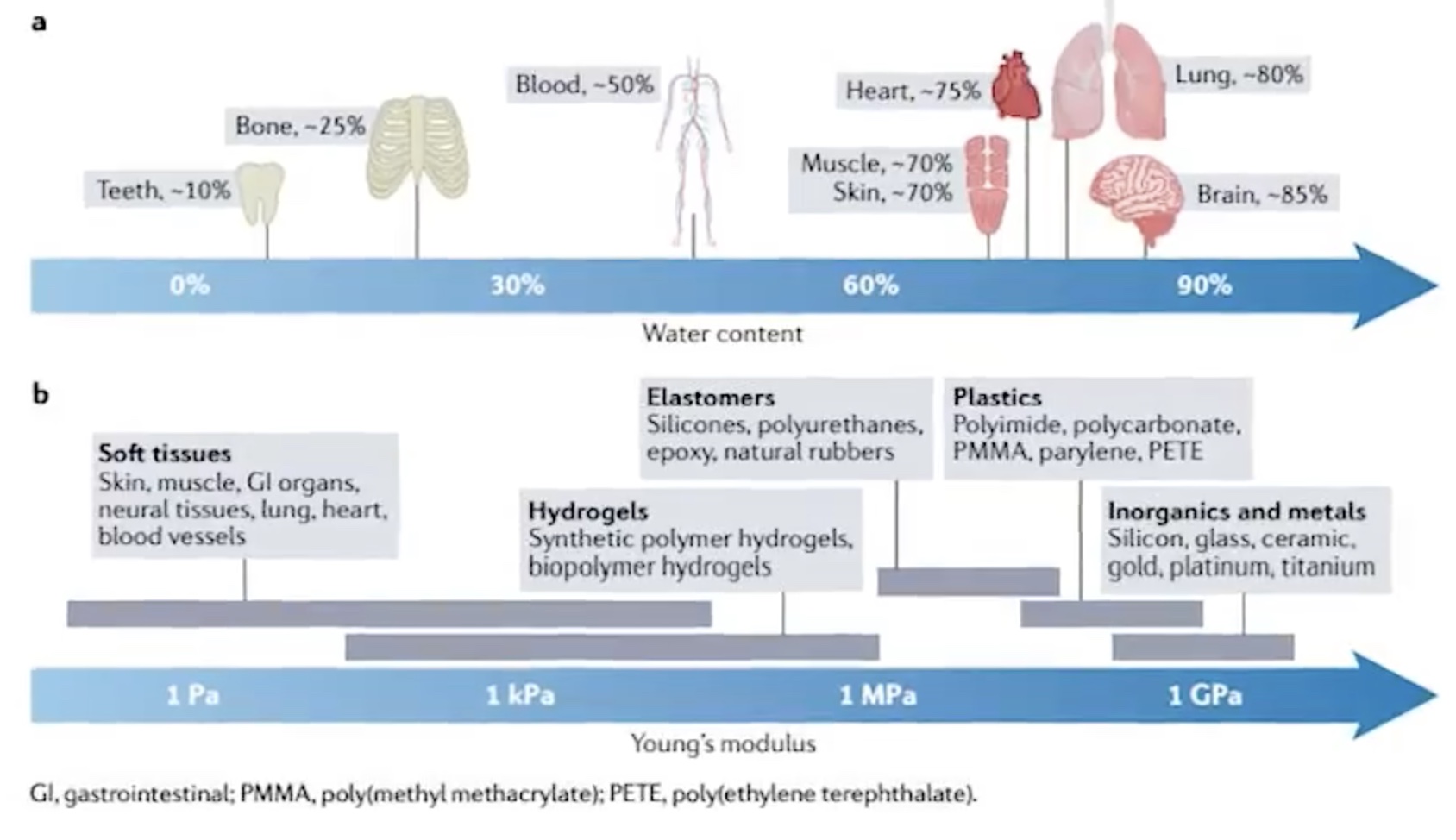
A hydrogel is a biphasic material, a mixture of porous, permeable solids and at least 10% by weight or volume of interstitial fluid composed completely or mainly by water. In hydrogels the porous permeable solid is a water insoluble three dimensional network of natural or synthetic polymers and a fluid, having absorbed a large amount of water or biological fluids. These properties underpin several applications, especially in the biomedical area. Many hydrogels are synthetic, but some are derived from nature. The term 'hydrogel' was coined in 1894.
The crosslinks which bond the polymers of a hydrogel fall under two general categories: physical hydrogels and chemical hydrogels. Chemical hydrogels have covalent cross-linking bonds, whereas physical hydrogels have non-covalent bonds. Chemical hydrogels can result in strong reversible or irreversible gels due to the covalent bonding. Chemical hydrogels that contain reversible covalent cross-linking bonds such as hydrogels of thiomers being cross-linked via disulfide bonds are non-toxic and are used in numerous medicinal products. Physical hydrogels usually have high biocompatibility, are not toxic, and are also easily reversible by simply changing an external stimulus such as pH, ion concentration (alginate) or temperature (gelatine); they are also used for medical applications. Physical crosslinks consist of hydrogen bonds, hydrophobic interactions, and chain entanglements (among others). A hydrogel generated through the use of physical crosslinks is sometimes called a 'reversible' hydrogel. Chemical crosslinks consist of covalent bonds between polymer strands. Hydrogels generated in this manner are sometimes called 'permanent' hydrogels.
Hydrogels are prepared using a variety of polymeric materials, which can be divided broadly into two categories according to their origin: natural or synthetic polymers. Natural polymers for hydrogel preparation include hyaluronic acid, chitosan, heparin, alginate, gelatin and fibrin. Common synthetic polymers include polyvinyl alcohol, polyethylene glycol, sodium polyacrylate, acrylate polymers and copolymers thereof. Whereas natural hydrogels are usually non-toxic, and often provides other advantages for medical use, such as biocompatibility, biodegradability, antibiotic/antifungal effect and improve regeneration of nearby tissue, their stability and strength is usually much lower than synthetic hydrogels. There are also synthetic hydrogels than can be used for medical applications, such as polyethylene glycol (PEG), polyacrylate, and polyvinylpyrrolidone (PVP). [wikipedia]
See Also
biomimicry
biodynamic agriculture
bioflavonoid
Biochemistry
The Biological Vacuum - The Optimal Driving Force for Machines
Biomagnetism
bio-electromagnetic vacuum
biological regeneration
biogenesis
biology
bio-catalyst
bio-dynamic
bio-dynamic motion
upsurging bio-magnetic rotary synthesising current
bio-technology
bio-technical
bio-dynamic form
Bio-Technology
bioluminescence
negatively surcharged biomagnetic dynagen concentrates
dynagen
biotechnical
biochemical
bio-centrifugate
bio-machine
biotechnologist
Biological Vacuum
bio-technologist
bio-centrifugence
biological
bio-electric current
bio-magnetic
biological process of development
Biophysics
bio-curve
bioelectric
biomagnetic
bio-electric
bio-electricity
biotechnical machine
bio-ecological age
Plants as Detectors of the Biofield
Photobiology
Bioenergy
Biopsychic
Bioacoustics
biosphere
15.24 - Water is Sensitive to Biometeorological Effects
